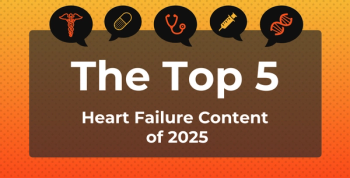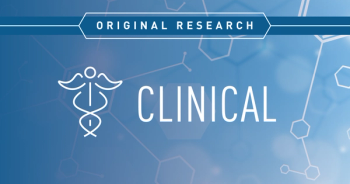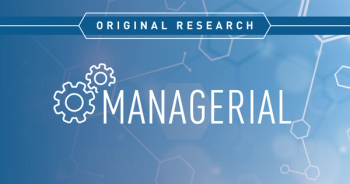
The American Journal of Managed Care
- October 2025
- Volume 31
- Issue 10
- Pages: 578-582
Opportunities and Obstacles Associated With the Medicare Diabetes Prevention Program
This study describes the current opportunities and obstacles associated with Medicare Diabetes Prevention Program implementation from the novel perspective of program suppliers across the US.
ABSTRACT
Objectives: CMS has provided full coverage of the Medicare Diabetes Prevention Program (MDPP) since 2018. However, the MDPP’s potential to impact public health has been limited by the lack of program suppliers and participants. This study describes the opportunities and obstacles associated with MDPP implementation from the novel perspective of program coordinators across the US.
Study Design: We conducted a qualitative study with a sample of program coordinators from MDPP suppliers listed in the CMS database.
Methods: We conducted individual interviews with 12 program coordinators to learn about their experiences becoming a Medicare-designated program supplier and delivering the MDPP. Data were analyzed using the Rapid Group Analysis Process.
Results: Six themes emerged: 2 about opportunities and 4 about obstacles. Opportunity themes reflected (1) supportive organizational cultures and (2) committed staff who were passionate about and invested in offering the MDPP. Obstacle themes revealed (1) challenges around obtaining Medicare designation, (2) logistics of submitting claims and receiving reimbursement, (3) insufficient payment associated with the pay-for-performance model and Medicare Advantage plans, and (4) overwhelming and conflicting government requirements. Program coordinators offered recommendations to support organizations in providing the MDPP, including peer mentors for onboarding and continued assistance and a more traditional fee-for-service payment model.
Conclusions: These findings highlight organizational culture as a strength for MDPP implementation and suggest policy changes to address MDPP obstacles. Wider program dissemination is urgently needed to prevent type 2 diabetes among the approximately 5.2 million eligible Medicare beneficiaries.
Am J Manag Care. 2025;31(10):578-582.
Takeaway Points
We interviewed program coordinators about Medicare Diabetes Prevention Program (MDPP) implementation to discern why MDPP access is limited nationwide.
- Findings reinforced previously identified challenges related to low reimbursement rates and the pay-for-performance model.
- A concerning finding is the extreme difficulty in receiving payment for MDPP services, especially from Medicare Advantage plans.
- Program coordinators desired individual support and user-friendly resources for program onboarding and ongoing reporting requirements.
- Despite obstacles, organizations supplying the MDPP are passionate about offering the program.
- Results highlight where policy changes can address reimbursement and billing issues to facilitate wider MDPP dissemination.
CMS and the CDC partnered to launch landmark coverage of the Medicare Diabetes Prevention Program (MDPP) in 2018.1 Approximately 5.2 million Medicare beneficiaries are eligible for this evidence-based lifestyle intervention at no cost,2 but CMS reported that only 9015 beneficiaries had participated from April 2018 through March 2024.3 Program access is severely limited by the lack of MDPP suppliers.4,5 To identify potential solutions for optimizing MDPP implementation and ensuring public health impact, we sought to understand why there is an MDPP supplier shortage.
Evidence suggests that low reimbursement rates may contribute to the lack of MDPP suppliers, given the gap between estimated costs and payments.6,7 Moreover, a health system with its own Medicare Advantage (MA) plan reported not being a supplier because its capitated payment structure provides no additional funding for MDPP services.8 Our previous stakeholder analysis showed that becoming a supplier is seen as complex, with extra steps required to credential lifestyle coaches and provide difficult-to-obtain information.9 These findings informed a larger study designed to gather more evidence to drive policy change.10 This study describes the current opportunities and obstacles associated with MDPP implementation from the novel perspective of program suppliers across the US.
METHODS
We invited program coordinators to participate from MDPP sites listed in the CMS database.11 We purposively sampled MDPP sites using the 5 major US regions, organization type, and number of MDPP participants reached in the past year as reported on an initial survey. We interviewed 12 program coordinators from the Northeast, Southeast, Midwest, and Northwest regions. No interviewees were from the Southwest, where only 4% of MDPP sites were located.11 Three coordinators were from YMCAs, 4 were from hospital systems, 2 were from volunteer organizations, and 1 each were from a community senior center, state health department, and nonprofit clinic. Five coordinators reached 0 to 29 MDPP participants in the past year, 6 reached 30 to 75 participants, and 1 reported 400 participants. Five coordinators provided the MDPP in person, 1 used distance learning, and 6 offered both options. After obtaining verbal consent, we conducted individual interviews via Zoom from February to December 2024. Data saturation was reached after 10 interviews, and 2 more interviews provided data confirmation. The study received approval from the Duquesne University Institutional Review Board.
Informed by the Consolidated Framework for Implementation Research (CFIR),12 our semistructured interview guide included 5 domains that affect program implementation: intervention characteristics (eg, cost), outer setting (eg, patient needs), inner setting (eg, culture), implementation processes (eg, executing), and individual characteristics (eg, self-efficacy). We focused on aspects of the domains most relevant to program coordinators. For example, to address the inner setting, we asked, “What are the key resources your organization needs to implement the MDPP?” To assess the outer setting, we asked, “What barriers do older adults served by your organization face to participating in the MDPP?”
Interviews lasted 45 to 60 minutes, were recorded, and then were transcribed verbatim. We used the Rapid Group Analysis Process (Rap-GAP)13 to code, interpret, and summarize qualitative data in a team with 2 experienced researchers and 1 study coordinator. Rap-GAP steps included team planning/preparation, individual data interaction (analyzing 3-4 transcripts individually), group data engagement (meeting to discuss notes and patterns), organization of knowledge gained (agreeing on patterns and elucidated themes), and findings summarization.13 We focused on identifying findings that could expeditiously inform MDPP policy.
RESULTS
Six themes emerged regarding MDPP implementation: 2 supported opportunities and 4 supported obstacles (Table [
Opportunities for MDPP Implementation
Opportunity 1: Program coordinators are passionate about and committed to offering the MDPP. Coordinators believed in the merits of the MDPP and were highly motivated to provide it to older adults. One coordinator reported, “I’m extremely passionate. I will do everything to make sure everybody understands all of this…work we’re doing.” They saw the weight loss and glycemic improvement that came from participating in the MDPP and wanted more older adults to experience these benefits. In turn, program coordinators wanted to do everything possible to sustain the MDPP. They viewed Medicare reimbursement as a path to sustainability.
Opportunity 2: Organizational culture and values directly align with MDPP goals to prevent diabetes in older adults. A coordinator stated, “Without any hesitation, my entire organization is 100% in support,” and another said, “We really believe in the work we’re doing.” Coordinators believed the MDPP was a good fit with the mission of their organizations overall.
Obstacles to MDPP Implementation
Obstacle 1: Obtaining Medicare designation is overly burdensome. The application process for Medicare designation required several steps, including filling out numerous forms in the submission portal and providing difficult-to-obtain information. One coordinator said, “The board members don’t want to provide their Social Security numbers and things like that.” A difficult-to-navigate portal with unfamiliar terminology forced program coordinators to resort to trial and error. Another coordinator stated, “Sometimes…I’m thinking the answer’s one thing, and they’re actually looking for something else.” Lastly, CMS approval took a long time. One coordinator said, “The amount of time that it takes to get the approval to bill…is really not worth it.” Another recalled, “I think the entire process of being approved took about a year.… I’d rather write a grant than go through that again. It was something.”
Obstacle 2: Logistics of billing are confusing and onerous, especially for community-based organizations. Program coordinators consistently reported that billing was the most difficult part of providing the MDPP. One stated, “We don’t bill Medicare because we don’t have the resources or the staffing. It’s very cumbersome.… We tried a couple of times, but we’re kind of at a loss.” Even when suppliers contracted with third-party companies, their claims were often denied without explanation. One coordinator stated, “I’m working on denials—denial after denial, and it’s a lot of work.... It’s a money suck for a nonprofit [institution] trying to stay sustainable.” Furthermore, they experienced insurmountable barriers to reimbursement from MA plans. For instance, one said, “It’s all the Advantage plans that you have to contract with, and they’re not streamlined.… There [are] about 6 or 7 plans that won’t contract with us.… So, the highest reimbursement rate you can get submitting out of network is 50%.”
Obstacle 3: Low reimbursement and the pay-for-performance model are problematic. Although most program coordinators did not know their program delivery costs, they understood that they could not deliver the MDPP without grant funding and/or self-pay participants, with one saying, “I write a lot of grants because Medicare would never cover all the costs.” However, grants were not viewed as a sustainable funding source, and self-pay is not viable because Medicare beneficiaries are supposed to receive the MDPP at no cost.14 The maximum reimbursement is $728 per Medicare beneficiary if they attend all sessions and achieve all weight loss benchmarks,15 but many coordinators noted that participants may drop out early and/or miss the benchmarks. Moreover, only 2 coordinators reported ever being paid by Medicare. Programs often ran in a deficit and only continued by avoiding scrutiny or if leadership was supportive regardless of finances. One coordinator said, “I keep my mouth shut on the troubles, and I just smile and say it’s worth it.” The current payment model is problematic due to the required benchmarks for weight loss, according to one coordinator: “I don’t understand why they’re making this so hard when they pay for everything else.… If you’re going to a doctor for blood pressure, they don’t not pay the doctor if your blood pressure goes high…so why would they base this on outcomes?” Other coordinators noted that they cannot force participants to lose weight or overcome structural barriers: “Our recognition status is threatened when we serve lower-income people because they don’t reach the same metrics.”
Obstacle 4: Program coordinators described how CDC and CMS requirements are overwhelming, confusing, and conflicting. Burdensome data requirements made it hard to maintain the CDC recognition status necessary for Medicare reimbursement. Organizations were underprepared to meet the intensive quarterly data submissions, with one coordinator saying, “We’re health care workers. We’re not data miners.… I don’t know what [they] want when [they] send it back…. [We] have to figure out what’s wrong because they don’t tell you.” Discrepancies between CDC and CMS requirements are challenging, such as different blood glucose levels for eligibility. One coordinator stated, “Their [CMS] criterion is a fasting blood glucose of 110 to 125 [mg/dL], but 100 is prediabetes [per the CDC16]. We get so many people with 102, 103.… They won’t be covered.” Moreover, the technical support, webinars, and resources provided by the CDC and CMS were seen as not user-friendly, with one coordinator saying, “I don’t know if you’ve ever sat in on any of their [CDC] conferences or their office hours, [but] they talk, like, way above your head.”
Recommendations
Program coordinators overwhelmingly wanted a standardized process for working with MA plans. Coordinators desired a more traditional reimbursement model, such as the fee-for-service model for Diabetes Self-Management Education and Support, which they perceived as simpler and more appropriate. Alignment between CDC and CMS requirements would also facilitate their work. Other recommendations included arranging for peer mentors and regional liaisons to help onboard new MDPP suppliers and provide ongoing support. Lastly, coordinators wanted understandable technical assistance and other user-friendly resources.
DISCUSSION
This study aimed to identify opportunities and obstacles to MDPP implementation from the perspective of program coordinators. Novel findings include how intrinsically motivated program coordinators are to offer the MDPP and help prevent diabetes and how well their work is supported by their organizations’ values. Organizational culture, a factor from the inner setting of CFIR, is a major strength for MDPP implementation. Previous evidence also supports inner setting elements as facilitators of lifestyle change program implementation, such as supportive leadership and aligning values.17,18
The extreme difficulty in being paid for MDPP services is a concerning finding. Billing itself is a substantial task but can generally be justified by the expected payment. Yet, Medicare coverage of the MDPP appears to be a double-edged sword: Organizations are initially encouraged that coverage will help sustain services, but then they learn that getting reimbursement is nearly unattainable. Repeated claim denials cause frustration and stymie organizations’ program sustainability efforts. Remarkably, CMS recently reported that only one-third of MDPP suppliers have submitted claims since 2018.15
Challenges due to the low reimbursement rates and pay-for-performance structure are consistent with results of previous studies in 2 health care systems.6,7 In 2022, CMS increased reimbursement rates in the pay-for-performance model,19 and it recently introduced a partial fee-for-service model for each session attended,20 which may add administrative burden to the billing team. Yet, our study captures how concerns about underpayment persist.
Complicated procedures for contracting with and obtaining reimbursement from MA plans must also be addressed, as 52% of MDPP participants were MA beneficiaries as of 2021.3 Although MA plans must provide MDPP coverage or offer their own MDPP, they are not required to contract with specific suppliers or provide the standard payments.21 This can discourage organizations from offering the MDPP to MA beneficiaries.
Suppliers desire additional support for initial onboarding and implementing the MDPP, specifically from peer mentors and regional CMS liaisons, highlighting a gap in the outer setting of CFIR. CMS could address this need by partnering new applicants with seasoned program coordinators. Peer support has repeatedly been linked to having a strong organizational culture22,23 and may benefit future MDPP suppliers.
Limitations
Limitations of this study include the small sample size and narrow focus on program coordinators. Nonetheless, program coordinators expressed consistent ideas and represent a variety of MDPP suppliers across the US, including community-based, hospital-based, and private organizations. Moreover, our interviews were guided by an implementation science framework and provided novel insights from an understudied stakeholder group. Future research should examine other stakeholders’ perspectives, such as Medicare beneficiaries and health care providers.
CONCLUSIONS
This study highlights previously unknown barriers that organizations face to implementing the MDPP while also identifying strengths and actionable recommendations. Organizational culture appears to be a major strength, whereas obtaining Medicare designation, billing challenges, insufficient payments, and inadequate resources are deterrents to MDPP uptake. Timely policy changes can help facilitate wider MDPP dissemination and capitalize on the opportunity to prevent diabetes for millions of older adults.
Acknowledgments
Melanie T. Turk, PhD, RN, and Natalie D. Ritchie, PhD, contributed equally to this work and are listed as co–first authors.
Author Affiliations: Duquesne University School of Nursing (MTT, BN, AG), Pittsburgh, PA; Kaiser Permanente Center for Health Research (NDR), Portland, OR.
Source of Funding: National Heart, Lung, and Blood Institute (R15HL163736).
Author Disclosures: The authors report no relationship or financial interest with any entity that would pose a conflict of interest with the subject matter of this article.
Authorship Information: Concept and design (MTT, NDR); acquisition of data (MTT, NDR, BN); analysis and interpretation of data (MTT, NDR, BN); drafting of the manuscript (MTT, NDR, AG); critical revision of the manuscript for important intellectual content (MTT, NDR, BN, AG); provision of patients or study materials (MTT); obtaining funding (MTT, NDR); administrative, technical, or logistic support (MTT, BN, AG); and supervision (MTT).
Address Correspondence to: Melanie T. Turk, PhD, RN, Duquesne University School of Nursing, 518 Fisher Hall, 600 Forbes Ave, Pittsburgh, PA 15282. Email: turkm@duq.edu.
REFERENCES
1. Burd C, Gruss S, Albright A, Zina A, Schumacher P, Alley D. Translating knowledge into action to prevent type 2 diabetes: Medicare expansion of the National Diabetes Prevention Program lifestyle intervention. Milbank Q. 2020;98(1):172-196. doi:10.1111/1468-0009.12443
2. Ng BP, Cheng YJ, Rutledge S, Cannon MJ, Zhang P, Smith BD. Estimated number of eligible Part B beneficiaries for the Medicare Diabetes Prevention Program at the county level and by urban–rural classification. PLoS One. 2020;15(11):e0241757. doi:10.1371/journal.pone.0241757
3. Medicare Diabetes Prevention Program expanded model: evaluation of performance (April 2018-March 2024). CMS. March 2025. Accessed September 3, 2025.
4. Yan A, Chen Z, Wang M, Mendez CE, Egede LE. Accessibility of Medicare Diabetes Prevention Programs and variation by state, race, and ethnicity. JAMA Netw Open. 2021;4(10):e2128797. doi:10.1001/jamanetworkopen.2021.28797
5. Ritchie ND, Sauder KA, Gritz RM. Medicare Diabetes Prevention Program: where are the suppliers? Am J Manag Care. 2020;26(6):e198-e201. doi:10.37765/ajmc.2020.43496
6. Ritchie ND, Gritz RM. New Medicare diabetes prevention coverage may limit beneficiary access and widen health disparities. Med Care. 2018;56(11):908-911. doi:10.1097/mlr.0000000000000981
7. Parsons AS, Raman V, Starr B, Zezza M, Rehm CD. Medicare underpayment for Diabetes Prevention Program: implications for DPP suppliers. Am J Manag Care. 2018;24(10):475-478.
8. Gruß I, Firemark A, Papajorgji-Taylor D, Fitzpatrick SL. Challenges with implementing the Diabetes Prevention Program for Medicare beneficiaries in an integrated health system. Am J Manag Care. 2021;27(11):e400-e403. doi:10.37765/ajmc.2021.88784
9. Turk MT, Ritchie ND, Jakub K. Stakeholder analysis: Medicare Diabetes Prevention Program awareness and implementation. Am J Manag Care. 2023;29(6):308-312. doi:10.37765/ajmc.2023.89372
10. Warziski Turk MT. Multi-stakeholder determinants of Medicare Diabetes Prevention Program implementation and participation. National Institutes of Health RePORTER. Accessed October 20, 2024.
11. Medicare Diabetes Prevention Program. CMS. Accessed October 20, 2024.
12. Damschroder LJ, Reardon CM, Widerquist MAO, Lowery J. The updated Consolidated Framework for Implementation Research based on user feedback. Implement Sci. 2022;17(1):75. doi:10.1186/s13012-022-01245-0
13. Hsu C, Mogk J, Hansell L, Glass JE, Allen C. Rapid Group Analysis Process (Rap-GAP): a novel approach to expedite qualitative health research data analysis. Int J Qual Methods. 2024;23:16094069241256275. doi:10.1177/16094069241256275
14. National Diabetes Prevention Program: preventing type 2 diabetes with Medicare. CDC. May 15, 2024. Accessed February 1, 2025.
15. CMS. Medicare and Medicaid programs; CY 2024 payment policies under the Physician Fee Schedule and other changes to Part B payment and coverage policies; Medicare Shared Savings Program requirements; Medicare Advantage; Medicare and Medicaid provider and supplier enrollment policies; and basic health program. Fed Regist. 2023;88(220):78818-80047.
16. Diabetes testing. CDC. May 15, 2024. Accessed October 20, 2024.
17. Wilson HK, Wieler C, Bell DL, et al. Implementation of the Diabetes Prevention Program in Georgia cooperative extension according to RE-AIM and the Consolidated Framework for Implementation Research. Prev Sci. 2024;25(suppl 1):34-45. doi:10.1007/s11121-023-01518-0
18. Damschroder LJ, Lowery JC. Evaluation of a large-scale weight management program using the Consolidated Framework for Implementation Research (CFIR). Implement Sci. 2013;8:51. doi:10.1186/1748-5908-8-51
19. CMS. Medicare program; CY 2022 payment policies under the Physician Fee Schedule and other changes to Part B payment policies; Medicare Shared Savings Program requirements; provider enrollment regulation updates; and provider and supplier prepayment and post-payment medical review requirements. Fed Regist. 2021;86(221):64996-66031.
20. CMS. Medicare and Medicaid programs; CY 2024 payment policies under the Physician Fee Schedule and other changes to Part B payment and coverage policies; Medicare Shared Savings Program requirements; Medicare Advantage; Medicare and Medicaid provider and supplier enrollment policies; and basic health program. Fed Regist. 2023;88(150):52262-53197.
21. Medicare Diabetes Prevention Program (MDPP) - frequently asked questions. Accessed September 23, 2024.
22. Agarwal B, Brooks SK, Greenberg N. The role of peer support in managing occupational stress: a qualitative study of the Sustaining Resilience at Work intervention. Workplace Health Saf. 2020;68(2):57-64. doi:10.1177/2165079919873934
23. Abbott M, Landers P, Pratt E. Peer-to-peer supports: promoting employment and well-being. Office of the Assistant Secretary for Planning and Evaluation. May 2019. Accessed October 21, 2024.
Articles in this issue
Newsletter
Stay ahead of policy, cost, and value—subscribe to AJMC for expert insights at the intersection of clinical care and health economics.








































